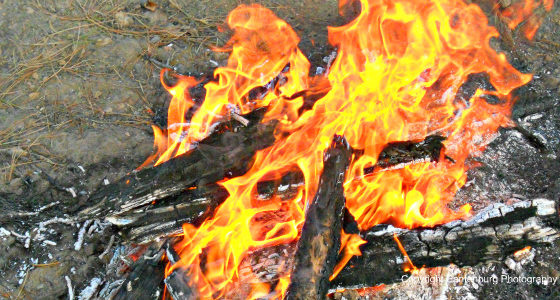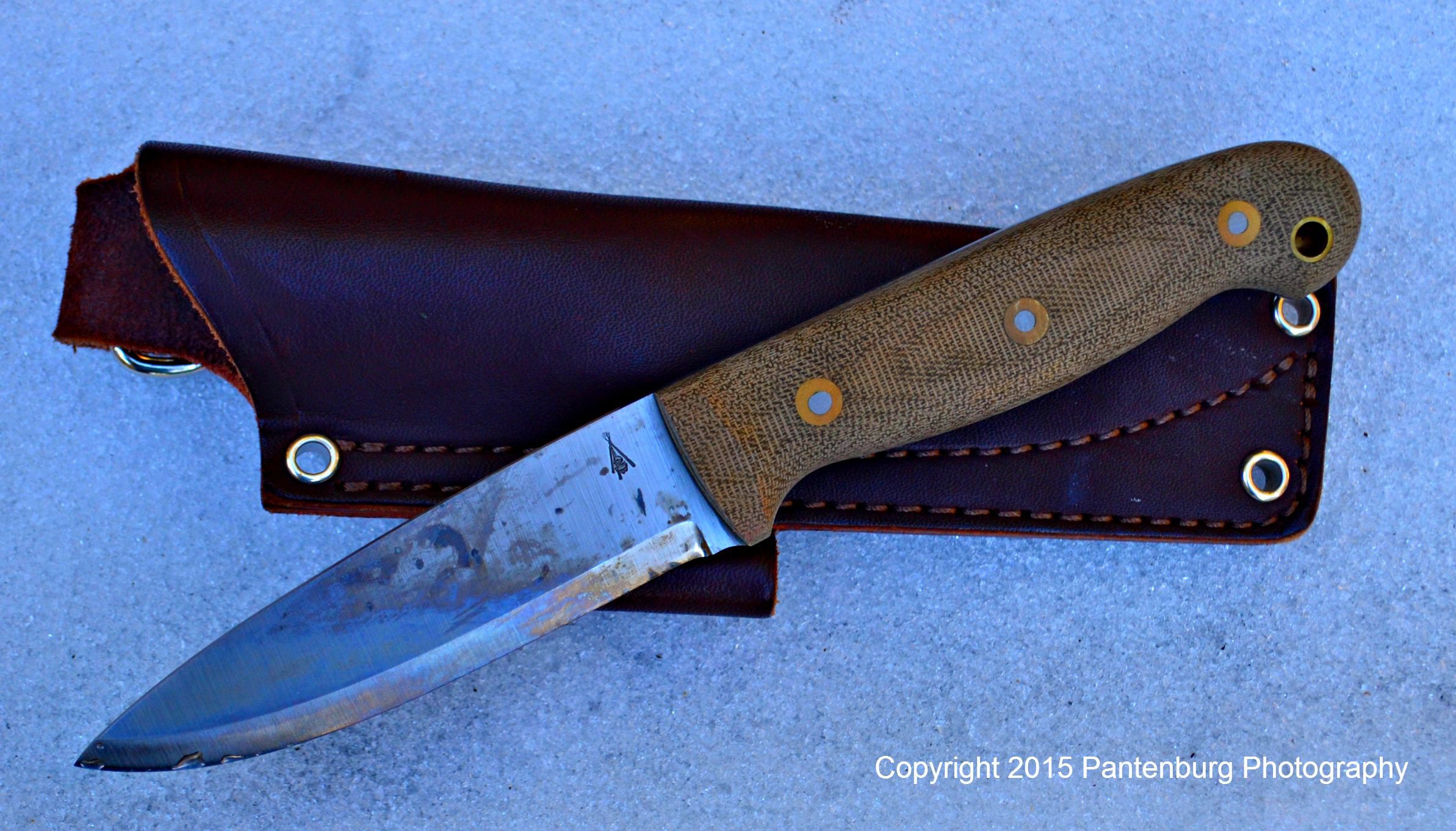Many Boy Scout councils and camps ban fixed-blade knives. Here’s why they shouldn’t. (And why the well-prepared survivalist/prepper should consider adding a fixed blade to his survival gear.)
by Leon Pantenburg
I love folding knives, and carry one daily. As an assistant scoutmaster of Boy Scout Troop 18 in Bend, Oregon, and a skills trainer, I am sometimes asked for suggestions on that first knife.
Invariably, I’ll recommend a fixed blade, and specifically, a Mora 840 Companion. These Moras are available for about $20 on the internet. They are good starter knives, inexpensive enough that it won’t cause trauma if they’re lost, and safe to use. My troop has been using this model for about ten years, and the Moras have held up well.

My modified Mora 840 Companion has served me well for almost a decade.
Now, I can understand some concerns about fixed blade knives. In many instances, such as urban carry, a sheath knife might draw undue attention.
For that matter, carrying any blade might be illegal, depending on local knife laws.
And I get it that camp directors don’t want kids showing up for camp with a Bowie or Rambo knife. But within reason, fixed blade knives should be allowed.
To start with, there is nothing in scout regs that ban a fixed blade knife. According to the official BSA website:
“Q. What is the official BSA regulation on carrying sheath knives?
A. The Boy Scout Handbook, Bear Handbook, and Webelos Handbook contain the program for the safe and responsible use of knives. The BSA believes choosing the right equipment for the job at hand is the best answer to the question of what specific knife should be used. We are aware that many councils or camps may have limits on the type or style of knife that should be used. The BSA neither encourages nor bans fixed-blade knives nor do we set a limit on blade length.”
Here’s five reasons why a fixed blade beats a folder for overall scout use:
Safety: A rigid blade knife will not fold over onto your fingers. It doesn’t matter how expensive the lock blade is, it can fail, cutting the user very badly. This happened at a local summer camp several years ago, causing a quick trip to the ER.

Troop 18 bought 50 Mora 840 Companions for the scouts to use.
Talking with other scoutmasters and leaders, I found the overwhelming majority of knife cuts at camps came after the knife folded onto a finger. Anything mechanical can fail.
Ease of use: Try carving, food preparation or other bushcraft tasks – you’ll soon realize most pocket knife handles are not as comfortable for extended use as that of a rigid blade.
One of my fellow assistant scoutmasters is also a very successful big game hunter. He’s used his scout Mora on elk, deer, wild boar, caribou and moose. Mine has cleaned fish, whittled sticks and done everything a camp knife is needed for.
Price: In an inexpensive folder, the hinge may cost as much, or more, than the blade to manufacture. This means blade quality will be compromised. Add a lock (which is required in Scout knives) and there will more manufacturing cost.
An inexpensive folder’s blade quality may suffer as a result. A fixed blade, though, can be produced cheaper, and with a better blade.
Sanitation: Use a folder for cooking, peeling carrots and potatoes, cleaning fish or other culinary tasks and inevitably, food debris gets stuck in the handle channel. Spreading peanut butter on a cracker (the activity your knife is most likely to be used for!) practically guarantees gross goo in the channel.
Gut a deer or field dress small game, and you’ll get the same debris/goo problem. I used a Buck folder as my deer hunting knife for years. After every successful harvest, I’d have to take a toothbrush and Q Tips and scrub the channel. That’s not a big deal at home, but in the wilderness with limited water, it could become a problem.
Sheath: I carry all my knives in a belt sheath. A sheath keeps a folder from accumulating pocket lint, dirt etc in the hinge. A sturdy sheath protects the rigid blade and the user. (Here’s how to make a quick, safe sheath out of cardboard.)
Now, for safety and ease of use in scout camp, I’d suggest that the following fixed blade knife

Sean Jacox honored me with an Eagle Mentor Pin when he achieved the highest rank in scouting.
requirements be applied:
Blade no longer than five inches, preferably under four-inches. Anything longer is unnecessary and gets to be unwieldy.
Solid handle that fits the scout. A camp knife needs an ergonomic handle for the individual who carries it. One size doesn’t fit all, and kids grow like weeds. A knife with a smaller handle might not work as well in a year or two.
Sturdy sheath that protects and secures the blade. Dangler sheaths are safer and easier to carry. All Troop 18 knife sheaths are modified for safety, and no untrained scout can carry any knife. Here’s how to convert a standard Mora plastic sheath into a safer version.
Scouts tend to be equipment users and gear accumulators. An inexpensive Mora or Buck lockblade is just a place to start. As the scout (or survivalist, prepper or outdoorsperson) gains more outdoor experience, he or she will figure out what knife works best for them.
And that’s the point!
Please click here to check out and subscribe to the SurvivalCommonSense.com YouTube channel, and here to subscribe to our email update – thanks!





Leave a Reply